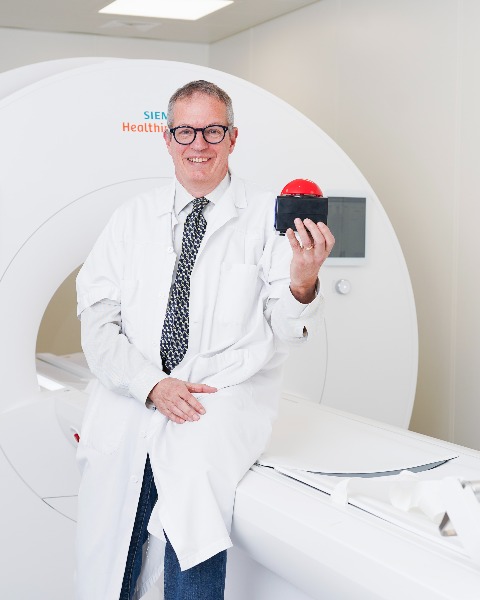Rapid Fire Abstracts
Comparison of free-running whole-heart 5D CMR to standard 2D volumetry in patients with right-sided congenital heart disease (RF_SA_482)
- EV
Eva L. Voegeli, BSc
Master Student
University Hospital (CHUV) and University of Lausanne (UNIL), Switzerland 
Christopher W. Roy, PhD
Lecturer
Lausanne University Hospital (CHUV) and University of Lausanne (UNIL), Switzerland- FD
Fabienne Dirbach, MD
Doctoral student
Lausanne University Hospital and University of Lausanne, Switzerland - ET
Estelle Tenisch, MD
Physician
University Hospital (CHUV) and University of Lausanne (UNIL), Switzerland - MP
Milan Prsa, MD
Cardiologist
University Hospital (CHUV) and University of Lausanne (UNIL), Switzerland - DR
David Rodrigues, MSc
Deputy chief radiology technician
Lausanne University Hospital and University of Lausanne, Switzerland - JY
Jerome Yerly, PhD
Research scientist
University Hospital (CHUV) and University of Lausanne (UNIL), Switzerland 
Mathias Stuber, PhD
Full Professor
CIBM-CHUV-UNIL
Laussane University, Switzerland
Juerg Schwitter, MD, PhD
Professor
University Hospital and University of Lausanne, Switzerland
Tobias Rutz, MD
Medical doctor
University Hospital and University of Lausanne, Switzerland
Co-Author(s)
Co-Author(s)
Presenting Author(s)
Co-Author(s)
Primary Author(s)
Determination of cardiac volumes and ejection fraction in cardiac magnetic resonance (CMR) is particularly important in right-sided congenital heart disease (CHD). Standard 2D cine sequences are usually acquired, however, require precise prescription of image planes and repetitive breath-holds leading to long scan times which can be difficult in patient-population with reduced compliance. Free-running whole-heart imaging may overcome these limitations by providing 3D volumes with isotropic resolutions and enabling the retrospective integration of arbitrary scan planes where both cardiac and respiratory motion is resolved (5D images).1 While such methods show promise for CHD patients, validation to existing standards is needed. This study therefore compares ventricular volume measurements from free-running 5D imaging using a Gadolinium enhanced fast interrupted steady state (FISS) sequence to those from standard 2D cine acquisitions.2,3,4
Methods:
Patients with right-sided CHD were scanned on a 1.5T MAGNETOM Sola system (Siemens Healthcare, Erlangen, Germany). A whole-heart free-running 3D radial FISS research sequence was acquired in addition to standard clinical images.2,3,4 All 5D images where reconstructed offline using a compressed-sensing based approach.1,5 For each 5D dataset, reformatting into short and long-axis images was performed to match the same spatial orientation as that from standard 2D cine images (Figure 1). Right (RV) and left ventricular (LV) end-diastolic and end-systolic volumes as well as ejection fraction (EF) were determined and compared using a paired student’s t-test to those obtained on 2D cine images.
Results:
Ten CHD patients (age 31±3y, 6 women, 3 tetralogy of Fallot, 3 after atrial switch operation for transposition of great arteries, 3 after dilatation of pulmonary valve stenosis, 1 after atrial septal defect closure) were included.
There was an excellent correlation of volumes compared between 2D and FISS except for the RVEF and a good agreement in Bland-Altman-analyses (Table, Figure 2). However, there were statistically significant differences between LV volumes (p < 0.05), (Table).
Conclusion:
In this preliminary study, 5D imaging provided results comparable to standard 2D volumetry for the RV even in complex right-sided CHD like in patients after atrial switch procedure. The differences observed for the LV needs further investigation.
A larger study is on the way allowing to provide more information on this new free-running technology in this patient population.
Images of slices of FISS vs 2D Standard in Diastole
Figure 1.pdf
Bland-Altman analyses for LVEDV, RVEDV, LVEF and RVEF. The red lines corresponds to the bias, the blue lines to the 95 % upper and lower limits of agreement (please see table)
Figure 2.pdf

